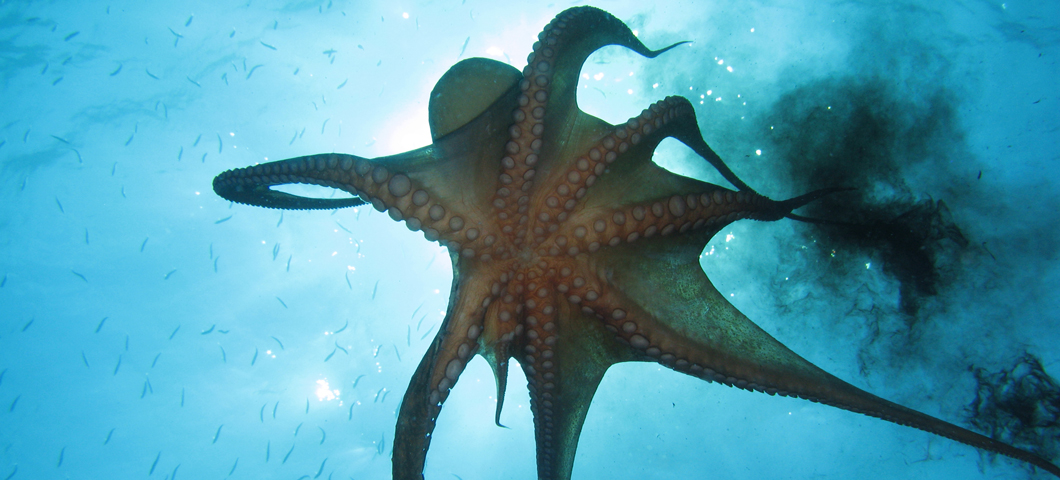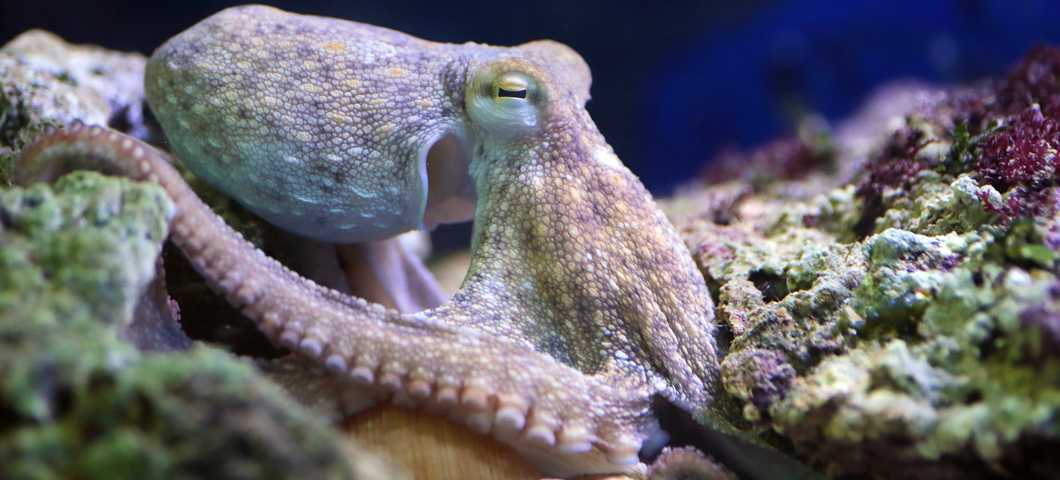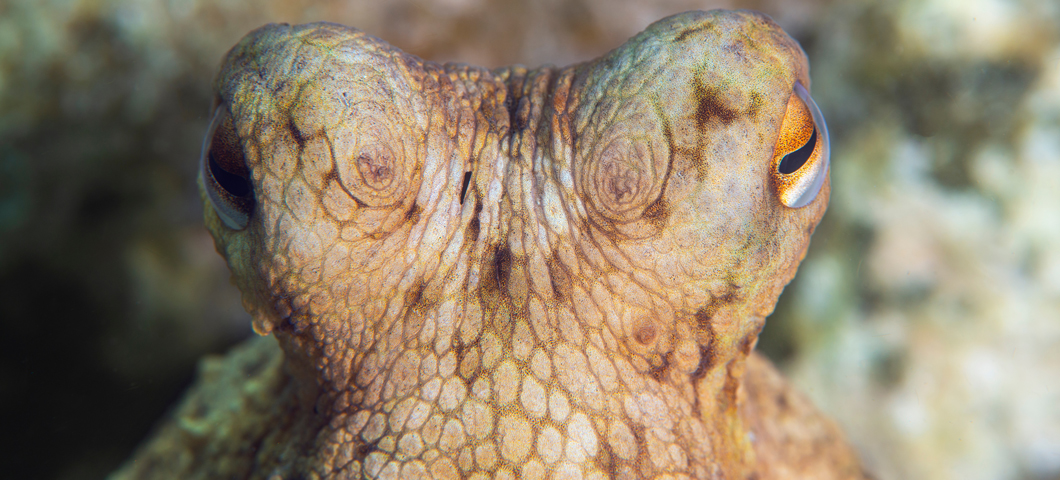When a three- or four-year-old draws a person, very often the person’s arms and legs are drawn coming out their head. That’s almost exactly what an octopus looks like!
These squishy sea creatures were alive millions of years before the dinosaurs. Today there are about 300 different kinds of octopuses, all named for their eight arms. (Octo means “eight.”) Some weigh about as much as a single raisin. Others may weigh over 500 pounds! Many scientists think the octopus is the most intelligent invertebrate of all. (An invertebrate is an animal without a backbone.)
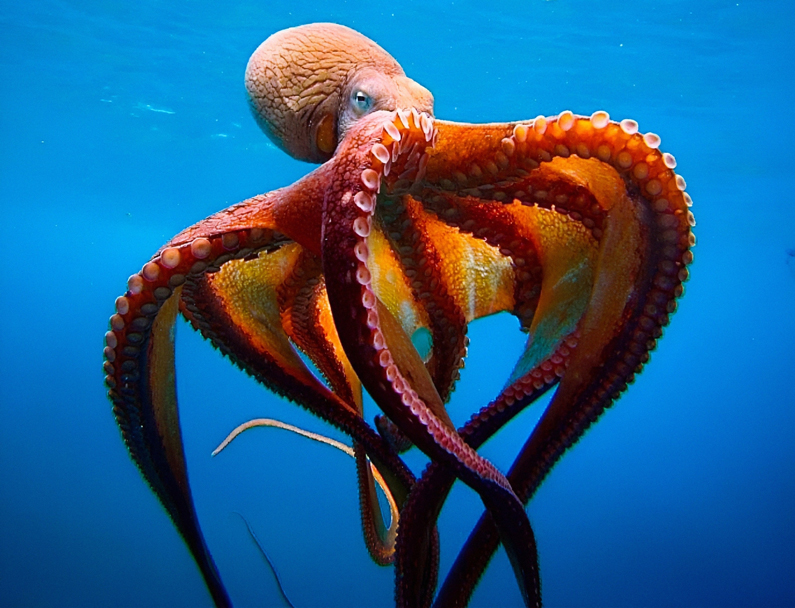
◀ Octopuses have blue blood and three hearts. Two hearts are attached to their gills. (Gills are special body parts that allow animals to breathe underwater.) The “gill hearts” pump blood to the gills, where it picks up oxygen from the water. The main heart pumps this oxygen-rich blood to the rest of the octopus’s body.
▲ Octopuses are masters of disguise. Under their skin are cells with sacs of color. Muscles control which colors show. On their skin are tiny bumps. The bumps can expand to make the skin smooth. They can pull back to make the skin bumpy. These changes in color and texture help the octopus blend in with its surroundings.
▲ Octopuses mostly walk along the seafloor. But when they need to move fast, they can. To do so, they take water into their mantle, a large sac behind their head. Then they force it out through a funnel. The force puts the octopus in motion, like when a balloon filled with air is untied.
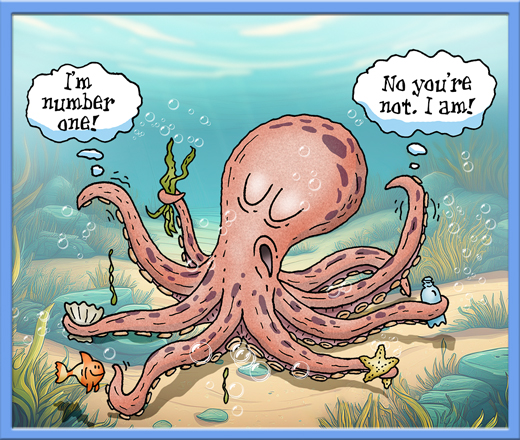
◀ Octopuses have nine brains! One is a large, doughnut-shaped brain between their eyes. The others are smaller brains – one in each arm. The smaller brains allow the octopus’s arms to act independently from one another. And also from the main brain. In fact, their arms can send information to each other without the main brain even knowing.
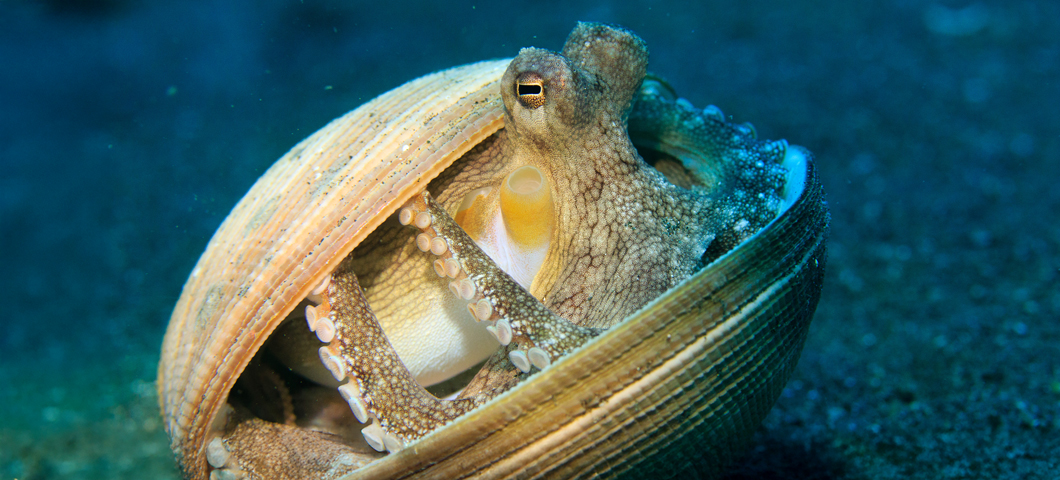
Does an octopus use tools? Yes! Small octopuses have been observed using empty shells as a shelter or for self-defense.
Check It Out!
How do octopuses consume a meal?
Octopuses feed on clams, snails, crabs, lobsters, and shrimp. They may first try to use their strong suction cups to get at their food. If that doesn’t work, they use the hard beak in their mouth to break open a shell. Their barbed tongue scrapes the octopus’s meal out of the shell. Mmmm. Delicious!
